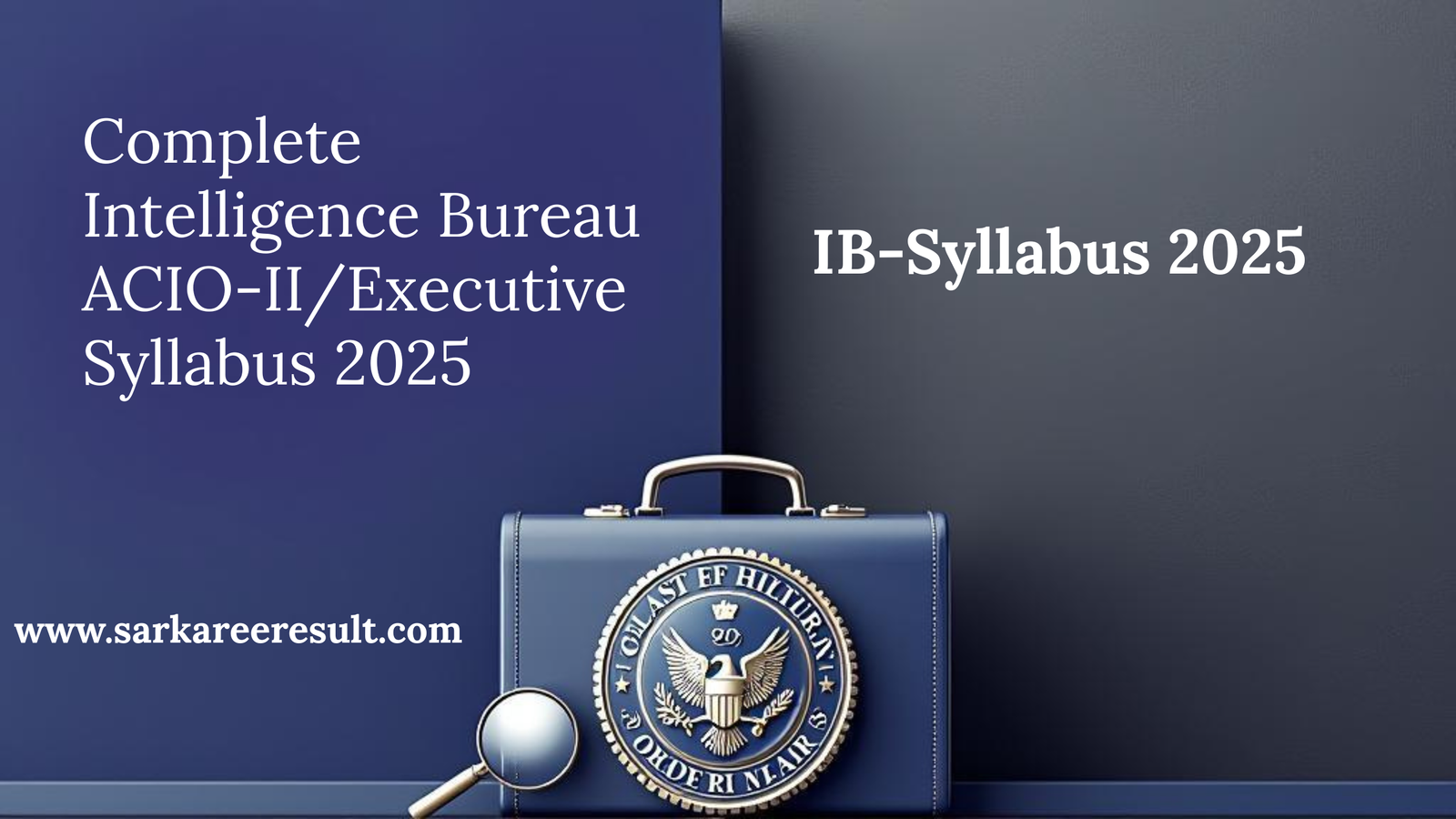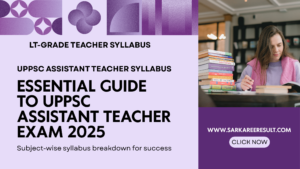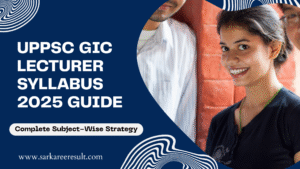Complete Intelligence Bureau ACIO-II/Executive Syllabus 2025
The Intelligence Bureau (IB) evaluates aspirants across knowledge, analytical ability, communication skills and situational. Below is a granular, topic-by-topic roadmap for Tier I (objective) and Tier II (descriptive) papers—mapped to the official notification as well as multiple authoritative exam-preparation sources.
Examination Structure at a Glance
| Stage | Mode & Paper Name | Question/Task Types | Marks | Duration | Negative Marking |
|---|---|---|---|---|---|
| Tier I | Online Objective Test | 100 MCQs (5×20) on Current Affairs, General Studies, Numerical Aptitude, Reasoning, English | 100 | 60 minutes | 0.25 per wrong answer12 |
| Tier II | Offline Descriptive Test | Essay (1×20), English Comprehension & Precis (10), Two Long-Answer Questions (2×10) | 50 | 60 minutes | None12 |
| Tier III | Interview/Personality Test | — | 100 | — | — |
Cut-offs: Tier I—UR 35, OBC 34, SC/ST 33, EWS 351; candidates 10×vacancies progress to Tier II, 5×vacancies to Tier III if secured ≥17/50 in Tier II1.
Tier I Detailed Syllabus
1. Current Affairs (20 Qs, 20 Marks)
Deep-dive areas:
- National events: Union/State budget highlights, parliamentary bills, cabinet decisions, flagship schemes, economic surveys, national rankings & indices3.
- International affairs: Summits (G-20, BRICS, SCO), UN reports, bilateral visits, geopolitical flashpoints, global health or climate agreements3.
- Science & Technology: ISRO launches, DRDO tests, Nobel awards, frontier tech (AI, quantum, semiconductors)3.
- Defence & Security: Exercises (e.g., Yudh Abhyas, Garuda), indigenous weapon systems, paramilitary reforms, intelligence cooperation pacts43.
- Economy & Business: RBI policy rates, forex reserves, FDI trends, major corporate mergers, cryptocurrencies regulation5.
- Sports & Awards: Olympic/Asian Games medals, ICC/FIFA events, national sports awards, Booker, Oscar, Grammy, Bharat Ratna, civilian honours6.
2. General Studies (20 Qs, 20 Marks)
| Sub-Domain | Topics in Scope |
|---|---|
| History | Ancient, Medieval & Modern India; freedom struggle & revolutionary movements; world wars23. |
| Geography | Physical (landforms, climate), Indian (rivers, soil, vegetation), World (continents, climatic zones); environmental conservation56. |
| Polity & Constitution | Preamble, fundamental rights & duties, DPSPs, Parliament, President, judiciary, federalism, emergency provisions, recent constitutional amendments45. |
| Economy & Finance | National income, inflation, unemployment, monetary/fiscal policy, budgeting, taxation, economic surveys, poverty alleviation, financial inclusion57. |
| Science & Tech | Basics of physics, chemistry, biology; biotechnology, IT & cyber, nanotech, space, nuclear energy23. |
| Static GK | Important organisations & HQs, Indian art & culture, UNESCO sites, dance forms, festivals, reservoirs, dams, space centres58. |
3. Numerical Aptitude (20 Qs, 20 Marks)
| Arithmetic | Advance/Algebra | Modern Math & Misc. | Mensuration/Geometry | Data Interpretation |
|---|---|---|---|---|
| Percentages, profit-loss, SI/CI, ratio-proportion, mixture-alligation, averages, time & work, pipes & cisterns, boats & streams, time-distance, partnerships59 | Linear & quadratic equations, inequalities, surds & indices, percentages in algebraic form, progressions (AP/GP/HP)9. | Permutation-combination, probability, set theory, Venn diagrams, logarithms, Boolean algebra5. | 2-D & 3-D figures, area, perimeter, volume & surface area of cylinder, cone, sphere, frustum; coordinate geometry basics5. | Tables, bar/line/pie charts, caselets—calculation of mean, percent change, trending analysis; level comparable to CAT-mathematics but shorter length23. |
Shortcut mastery of LCM/HCF, divisibility, simplification (BODMAS) and approximation is crucial for speed.
4. Reasoning & Logical Aptitude (20 Qs, 20 Marks)
| Verbal/Analytical | Non-Verbal/Visual | Decision & Critical Thinking |
|---|---|---|
| Syllogisms, statement–assumption/conclusion/argument, coding–decoding (letter-shifts, substitution, alphanumeric), direction sense, blood relations, odd one out, analogy, series (alphabetic, numeric), order & ranking, calendars & clocks29. | Mirror & water images, paper folding/cutting, figure completion, embedded figures, cube dice, matrix reasoning, pattern completion, counting of figures93. | Seating & distribution puzzles (linear, circular, rectangular, floor-based), input-output tracing, cause-effect, data sufficiency (logical), logical sequence of words, chart-based reasoning53. |
5. English Language (20 Qs, 20 Marks)
| Component | Detailed Breakdown |
|---|---|
| Grammar & Usage | Parts of speech, subject-verb agreement, tenses, voice, narration, articles, prepositions, modifiers, parallelism, question tags3. |
| Vocabulary | Synonyms–antonyms, phrasal verbs, idioms & phrases, one-word substitution, foreign words, homonyms/homophones, commonly confused words56. |
| Comprehension | 1–2 passages on social, economic, sci-tech or philosophical themes; Qs on central idea, inference, tone, vocabulary context, title, true/false4. |
| Verbal Ability | Para-jumbles (sentence arrangement), spotting errors, sentence improvement, cloze tests, fillers (single/multiple blank), spelling correction29. |
Reading editorials daily refines both comprehension and essay content bank.
Tier II Detailed Syllabus (Descriptive Paper)
| Section | Marks | Expectation & Topic Bandwidth |
|---|---|---|
| Essay Writing | 20 | One structured essay (400–500 words). Theme buckets: internal security challenges (terrorism, cyber-espionage, left-wing extremism), external threats (border disputes, strategic alliances), economic reforms, digital governance, AI ethics, women-centric policies, climate resilience, cultural diversity, space race, global health crises. Marks weigh idea clarity, factual accuracy, coherence, language flair13. |
| English Comprehension & Precis | 10 | Passage (300–350 words) from contemporary essays; tasks—summary (100 words), title suggestion, MCQ/short answers on theme, vocabulary & inference. Tests grasp of main arguments and précis writing discipline25. |
| Two Long-Answer Questions | 2×10 | Analytical responses (150–200 words each) usually on current affairs, socio-political theory, economy or public policy. Sample prompts: role of intelligence in emerging cyber domain; impact of fintech on national security; reforms needed in federal policing; implications of demographic dividend43. |
Assessment Grid: content depth (40%), structure & logic (30%), language quality (20%), originality (10%).
Recommended Preparation Resources
- Newspapers & Reports – The Hindu, Indian Express, PIB, Yojana; Economic Survey, India Year Book for core GS updates3.
- Standard Texts – NCERTs (VI–XII) History/Geography/Science; Laxmikanth Polity; R.S. Agarwal Quant & Reasoning; Wren & Martin; Norman Lewis Word Power, Manorama Yearbook56.
- Mock Platforms – Adda247, Testbook, Oliveboard provide sectional & full-length tests with analytics matching IB difficulty2103.
- Government Security Doctrine – MHA annual reports, IB-released study booklets (open-source portions), NITI Aayog strategy docs for essay fodder43.
Strategic Study Plan (12-Week Blueprint)
Week 1-2: Foundation
- Revise arithmetic fundamentals & grammar rules.
- Create OneNote/Evernote notebook—divide into CA categories (economy, defence, S&T, polity).
Week 3-6: Intensive Practice
- Daily: 1 reasoning puzzle, 2 DI sets, 10 vocab flashcards.
- Weekend: Full Tier I mock, analyze error-log (accuracy <85% → revisit concept).
Week 7-9: Descriptive Skills
- Alternate days: 1 essay + 1 précis; peer-review for structure & word economy.
- Craft 100 topic-wise fact sheets (schemes, indices, reports).
Week 10-12: Simulation & Revision
- Simulate Tier I + Tier II back-to-back twice weekly.
- Flash-revise formulae, constitutional articles, historical timelines.
- Polishing interview dossier: biodata questions, situational Q&A.
Intense last-mile revision must balance breadth (Tier I) with depth (Tier II essays).
Common Pitfalls & How to Avoid Them
- Over-reliance on coaching material: always cross-verify with original government sources for accuracy1.
- Ignoring negative marking: attempt ~70–75 well-selected MCQs rather than blind-guessing all 1002.
- Essay digression: adhere to introduction-cause-effects-solution-conclusion format; keep each paragraph ≤100 words for readability3.
- Neglecting Tier II until Tier I result: descriptive proficiency demands months of practice—run in parallel from week 15.
Final Takeaways
Mastery of the IB ACIO syllabus demands an integrated approach—conceptual clarity in quantitative & reasoning, encyclopedic yet contextual awareness of national and global affairs, and eloquent written communication. Craft a disciplined schedule, track progress through analytics, refine answers via iterative feedback, and ground every argument in verifiable data. With strategic persistence, clearing this multi-layered gateway to India’s premier intelligence agency becomes an achievable mission.




Pingback: Intelligence Bureau ACIO-II/Executive Recruitment 2025 - Sarkareeresult.com